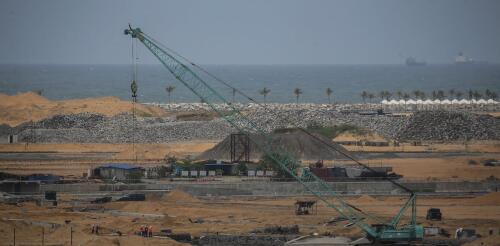Development
Is Atlanta a good place to live? Recent rankings certainly say so. In September 2022, Money magazine rated Atlanta the best place to live in the U.S., based on its strong labor market and job growth. The National Association of Realtors calls it the top housing market to watch in 2023, noting that Atlanta’s housing prices are lower than those in comparable cities and that it has a rapidly growing population. But this is only part of the story. My new book, “Red Hot City: Housing, Race, and Exclusion in Twenty-First Century Atlanta,” takes a deep dive into the last three decades of housing, race and development in metropolitan Atlanta. As it shows, planning and policy decisions here have promoted a heavily racialized version of gentrification that has excluded lower-income, predominantly Black residents from sharing in the city’s growth. One key driver of this division is the Atlanta BeltLine, a 22-mile (35-kilometer) loop of multiuse trails with nearby a...
More than one-third of all people in the world live in cities, towns and villages on coasts. They rely on healthy oceans for many things, including food, income, a stable climate and ready connections to nature. But as coastal populations continue to grow, governments are under increasing pressure to ramp up development for transportation, power generation and economic growth. Projects like these can have heavy impacts on lands, waters and wildlife. World leaders are gathering in Montreal this week for the long-awaited Conference of Parties to the United Nations Convention on Biological Diversity, or COP15. This treaty, which was adopted at the 1992 Earth Summit in Rio de Janeiro, is designed to protect biodiversity – the variety of life on Earth, from genes to entire ecosystems. At the two-week conference, nations are expected to officially adopt the Post-2020 Global Biodiversity Framework, which will guide global conservation efforts over the next decade. China is thi...
The U.S. Supreme Court opens its new session on Oct. 3, 2022, with a high-profile case that could fundamentally alter the federal government’s ability to address water pollution. Sackett v. EPA turns on a question that courts and regulators have struggled to answer for several decades: Which wetlands and bodies of water can the federal government regulate under the 1972 Clean Water Act? Under this keystone environmental law, federal agencies take the lead in regulating water pollution, while state and local governments regulate land use. Wetlands are areas where land is wet for all or part of the year, so they straddle this division of authority. Swamps, bogs, marshes and other wetlands provide valuable ecological services, such as filtering pollutants and soaking up floodwaters. Landowners must obtain permits to discharge dredged or fill material, such as dirt, sand or rock, in a protected wetland. This can be time-consuming and expensive, which is why the case is of keen...


